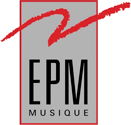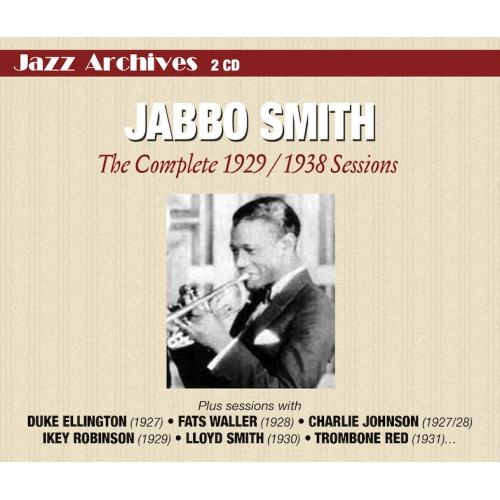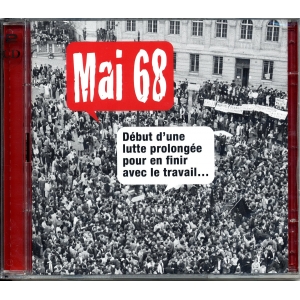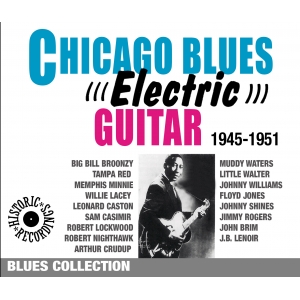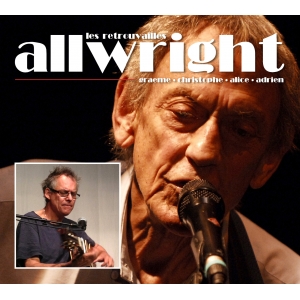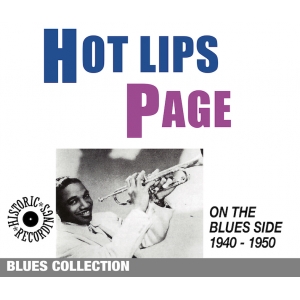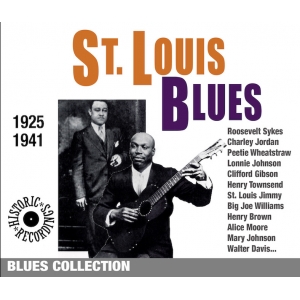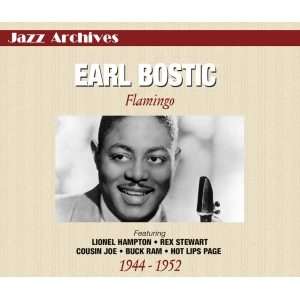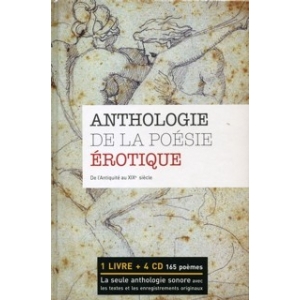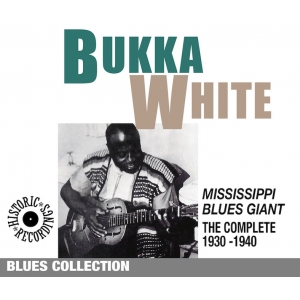JABBO SMITH / THE COMPLETE 1929-1938 SESSIONS
VOUS RECEVREZ UN BON D'ACHAT 10% À PARTIR DE 40 € DE COMMANDE
CD1
1 PARADISE WOBBLE
2 BIRMINGHAM BLACK BOTTOM
3 DON'T YOU LEAVE ME HERE
4 ROCK JENNY ROCK
5 IT'S RIGHT HERE FOR YOU
6 WHAT CAN A POOR FELLOW DO ?
7 BLACK AND TAN FANTASY
8 BLACK AND TAN FANTASY
9 YOU AIN'T THE ONE
10 CHARLESTON IS THE BEST DANCE ATER ALL
11 HOT-TEMPERED BLUES
12 WILLOW TREE
13 'SIPPI
14 THOU SWELL
15 PERSIAN RUG
16 GOT BUTTER ON IT
17 READY HOKUM
18 JAZZ BATTLE
19 LITLE WILLIE BLUES
20 SLEEPY TIME BLUES
21 TAKE YOUR TIME
22 SWEET'N LOW BLUES
23 ACE OF RHYTHMS
CD 2
1 LET'S GET TOGETHER
2 SAU-SHA STOMP
3 MICHIGANDER BLUES
4 DECATUR STREET TUTTI
5 'TILL TIMES GET BETTER
6 LINA BLUES
7 WIERD AND BLUE
8 CROONING THE BLUES
9 I GOT THE STINGER
10 BOSTON SKUFFLE
11 TANGUAY BLUES
12 BAND BOX STOM
13 MOANFUL BLUES
14 WAKE UP SINNER
15 RUB ME SOME MORE
16 I'M GOING AWAY TO WEAR YOU OFF MY MIND
17 THAT'S MY STUFF
18 GREASY PLATE STOMP
19 B-FLAT BLUES
20 UBANGI MAN
21 RHYTHM IN SPAIN
22 ABSOLUTELY
23 HOW CAN CUPID BE SO STUPID ?
JABBO SMITH
"Jabbo Smith était à l'époque aussi bon que Louis (Armstrong). C'était le Dizzy Gillespie du moment... Son jeu était aussi fulgurant que celui de Louis était mélodieux...". C'est ainsi que le bassiste Milton Hinton dépeignait un trompettiste quelque peu oublié dans cet ouvrage bourré de renseignements et d'anecdotes intitulé "Hear Me Talkin' To Ya". Une description à la fois très louangeuse et assez cruelle, puisque, en quelques mots, en quelques lignes, Hinton trouve moyen de comparer Jabbo Smith à deux autres trompettistes illustres, dont la renommée dépassa la sienne de très loin. Il est vrai que c'est sans doute précisément à cause de cela qu'il les mentionne : à seule fin de permettre au lecteur d'avoir des points de comparaison immédiats. Cependant, il y a là, tout-de-même, une certaine injustice que Smith lui-même, interrogé au début des années 80, ne s'est pas privé de souligner. Agacé par ces comparaisons auxquelles les historiens se livraient depuis des années, il insinua qu'au lieu de rechercher à tout prix ce qui le faisait ressembler aux autres, il eut sans doute été plus intéressant de découvrir quelle pu être sa véritable originalité!
Jabbo Smith (1908-1991) est né à Pembroke (Géorgie) et a passé une grande partie de son enfance au "Jenkins Orphanage" de Charleston, un orphelinat d'où sortirent bien d'autres figures gloires du jazz. Il y apprit la trompette et le trombone et, dès l'âge de seize ans, devint professionnel. Fin 1925, à New York, il intègre le groupe que le pianiste Charlie Johnson produit au "Small's Paradise Club". Avec l'orchestre, il participe en février 1927 à sa première séance d'enregistrement, dont sont issus Paradise Wobble, Birmimgham Black Bottom et Don't You Leave Me Here. Onze mois plus tard, il récidive avec You Ain't the One, Charleston Is the Best Dance After All et Hot-Tempered Blues... On pourra trouver des "prises" différentes de ces six morceaux (ainsi que d'autres faces sans Jabbo Smith) dans le recueil "The Complete Charlie Johnson Sessions, 1925-1929", édité sous le numéro HnS 151102. Quelques jours plus tard, Jabbo prend le large sans prévenir son chef! Furieux, celui-ci dépose une plainte auprès du puissant syndicat des musiciens : le retrait de sa carte professionnelle eut empêché le fuyard d'être engagé par qui que ce soit dans quelques établissements que ce soit. Heureusement pour lui, ses collègues de l'orchestre parviennent à faire revenir le patron sur sa décision!...
Déjà très remarqué en 1926-27, Jabbo Smith, outre les faces avec Charlie Johnson, a également enregistré avec d'autres groupes à cette époque, notamment, avec celui du trompettiste Thomas Morris et avec les "Georgia Strutters", formation de studio réunie par le pianiste/chanteur/compositeur Perry Bradford (Rock Jenny Rock et It's Right Here For You). Egalement, lors d'une séance de novembre 1927, il remplace l'extraordinaire "Bubber" Miley chez Duke Ellington, conférant à What Can A Poor Fellow do et surtout aux deux prises de la célèbre Black And Tan Fantasy une sorte de douceur feutrée assez inhabituelle. Jabbo, cependant, décline l'offre du Duke de remplacer définitivement Miley dans son orchestre et se joint à l'équipe chargée d'accompagner la revue Keep Shufflin' de James P. Johnson. Avec un contingent de ce groupe comprenant James P. au piano, le clarinettiste/saxophoniste Garvin Bushell et Fats Waller à l'orgue, il enregistre en mars 1928 quatre de ses meilleurs disques : deux titres, le superbe Willow Tree et 'Sippi, extraits de la revue en question, et deux "tubes" de l'heure, Thou Swell et l'exotique Persian Rug. Là encore, signalons que des prises différentes des trois premières pièces figurent dans le recueil de la collection "Hot 'N' Sweet" consacré aux enregistrements d'orgue de Fats Waller (HnS. 151212). La séance, admet Garvin Bushell, fut plutôt laborieuse, car Fats et le grand orgue d'église se trouvaient dans une pièce séparée de celle où étaient les trois autres musiciens. Comme il fallait s'y attendre, la musique de l'orgue leur parvenait avec un léger retard, et Fats dut se livrer à un véritable tour de force. Il paraît même qu'il ne but pas une seule goutte de whisky avant que tout ne soit fini! En tout cas, le résultat, tout-à-fait unique dans l'histoire du jazz enregistré, est éblouissant. Ici plus qu'ailleurs, Jabbo Smith se révèle tendre et sensible, assez éloigné des acrobaties, des prouesses techniques, dont il commence à faire son pain quotidien.
Les acrobaties, les audaces, elles arrivent vraiment avec cette vingtaine de faces gravées sous son nom au cours des huit premiers mois de l'an 1929. L'orchestre de Keep Shufflin' est dissout à Chicago à la fin de 1928 et Jabbo choisit de demeurer dans la Cité du vent. Il est vrai que, malgré ses qualités et sa fougue, son caractère difficile a fini par le rendre assez impopulaire à New York. Fantasque impénitant coureur de jupons, incapable de la moindre exactitude, véléitaire, médiocre gestionnaire de sa propre carrière, il décourage les meilleures volontés, les employeurs les plus patients. Ce qui ne l'empêche tout-de-même pas de jouer dans quelques-uns des plus réputés grands orchestres de Chicago. Il n'y reste jamais très longtemps et, somme toute, n'a sans doute pas fait le quart de la carrière qui aurait dû être la sienne... Même la belle série des enregistrements de 1929 avec les "Rhythm Aces" laisse comme l'impression d'un ouvrage inachevé...
Pourtant, c'est là une chance inespérée : fort contrariés d'avoir raté Louis Armstrong -dont les disques, enregistrés chez OKeh à la tête de ses "Hot Five" et "Hot Seven", se vendent comme des petits pains-, les responsables des firmes concurrentes imaginent de s'inventer leurs Louis Armstrong ! Ainsi, Victor met la main sur le lyrique et talentueux Henry Allen Junior, tandis que Brunswick/Vocalion jette son dévolu sur le piaffant Jabbo. Directeur artistique de la branche chicagoane de la firme, l'entreprenant Mayo Williams organise les séances en cherchant à se rapprocher au maximun de l'esthétique du premier "Hot Five". Bien que pas spécialement originale, l'idée n'est pas mauvaise non plus, et les résultats se révèlent intéressants. Mais l'intendance ne suit pas. Alors que les disques d'Armtsrong et ceux de Henry Allen sont bien distribués, non seulement dans le pays mais aussi en Amérique du Sud, en Europe et même en Asie, ceux du sieur Smith ne connaissent que des ventes plutôt confidentielles uniquement sur le territoire des Etats-Unis... Après les deux faces de janvier, Got Butter On It et Ready Hokum, publiées sous le nom du banjoiste virtuose Ikey Robinson, on passe aux choses sérieuses avec l'ébouriffant Jazz Battle -celle qui, de toutes les gravures des "Rhythm Aces", peut le plus faire songer à Dizzy Gillespie. Mais début 29, Dizzy n'a pas encore douze ans, et, ainsi qu'on le lui a demandé, c'est avant tout à Satchmo, la plus grande figure du jazz de ce temps-là, que se réfère Jabbo Smith. Ainsi donc, on pourra s'amuser à débusquer ici ou là, au détour de telle ou telle phrase, quelques tournures familières. On aurait cependant grand tort de se limiter à ce petit jeu : Jabbo n'a rien d'un plagiaire et le prouve à maintes reprises en son style extrêmement mobile, volubile, voire facétieux. Plus le temps passe et moins le trompettiste accepte de se prêter à la mise en scène définie au départ. Dans Decatur Street Tutti et Sweet And Low Blues, deux de ses grandes réussites, il clame sans mal son originalité, et, s'il cite Armstrong dans Take Me To The River, il n'hésite pas à pousser son effarante technique jusqu'à ses extrêmes limites. Un peu plus tard, sur Lina Blues et Wierd (sic) And Blue, il donnera quelques échantillons de ses talent de tromboniste. Les partenaires de Jabbo ne sont pas en reste : Omer Simeon, le clarinettiste préféré de Jelly Roll Morton, intervient souvent de fort heureuse manière (Jazz Battle) et, quoique peu connus, les pianistes Alex Hill et Cassino Simpson se révèlent fins stylistes, dans la lignée de Teddy Weatherford et Earl Hines. Malgré tout cela, ces gravures souvent épiques en petits comités se trouvèrent littéralement noyées dans la production pléthorique de ces années d'avant la dépression. Si bien que les enregistrements furent définitivement stoppés dans le courant de l'été 29.
Si au cours des années suivantes (1930-1935) Jabbo Smith continue de trouver de l'embauche dans différents groupes de Chicago, New York ou Milwaukee, en revanche, les enregistrements ne sont pas légion. Sa présence est à peu près certaine dans les faces chicagoanes de juillet et octobre 1930 éditées sous le nom du mystérieux Lloyd Smith -on reconnait en tous cas sa voix sur Wake Up Sinners et Rub Me Some More, où le trompettiste semble par contre s'être assagi. Dans That's My Stuff, le seul titre de la troisième séance (novembre 30), la formation n'a pu être déterminée; on peut toutefois supposer que Smith en fait toujours partie. Même problème avec les deux gravures new yorkaise du 18 juin 1931 parue sous le nom de "Trombone Red" (alias Robert Freeman). Pendant des années, on a été persuadé d'entendre sur Greasy Plate Stomp et B-Flat Blues, outre Jabbo, quelques ellingtoniens d'élite, dont le Duke en personne au piano. On sait à présent que ce jour-là, Duke et les siens jouaient à Philadelphie. Quant à Jabbo, il était plutôt du côté de Chicago. Pourtant, il a laissé entendre qu'il se reconnaissait dans ces faces. Mais, après tout, n' avait-il pas à cette époque quelques imitateurs, lui aussi ?... Aucun problème avec le Ubangi Man de 1935 par l'orchestre de Charlie Lavere : cette fois, Jabbo Smith est bien l'un des trompettistes. L'ennui, c'est qu'il ne joue pas en soliste ! La belle atmosphère qui la baigne nous a néanmoins inciter à proposer cette face très peu connue...
De 1936 à 1938, Jabbo travaille dans l'orchestre du pianiste Claude Hopkins. Malheureusement, là encore, les quelques titres enregistrés chez Decca ne le mettent guère en valeur. Cette même firme l'invite cependant, à l'instigation de Mayo Williams, à réaliser quatre faces sous son nom en 1938, à la tête de son nouveau petit orchestre. Toujours aussi véloce (Rhythm In Spain, More Rain More Rest), son jeu a gagné en décontraction, en subtilité. En ayant su prendre un certain recul, le musicien a conquis sa maturité. En 1938, il n'a que trente ans, mais en ces jours où triomphe la folie du swing, comparé à ses jeunes concurrents -Roy Eldridge et Dizzy Gillespie (le vrai!)-, il fait déjà figure d'ancien et, de nouveau, passe à côté de la reconnaissance. Une reconnaissance qu'au fond, il n'obtiendra jamais vraiment. Dans Early Jazz, Gunther Schuller parle de lui comme d'un "musicien pour musiciens". Sans doute est-ce là que réside le drame : il ne suffit pas de plaire à ses pairs; il faut aussi arriver à séduire le public sans pour autant céder à la facilité. Jabbo Smith semble y être presque parvenu. C'est dans ce "presque" que réside toute l'ambiguité. Dommage.
D.N.
“Jabbo was as good as Louis then. He was the Dizzy Gillespie of that era. He played rapid-fire passages while Louis was melodic and beautiful.” So said veteran bassist Milt Hinton in that wonderful collection of personal reminiscences entitled “Hear Me Talkin’ To Ya”. The description is at once immensely flattering and slightly cruel, for with just these few words Hinton manages to place Jabbo Smith in the same league as two of jazz’s most illustrious trumpeters, yet here was an artist whose renown was destined to remain as modest as it was short-lived. Hinton’s statement certainly served its purpose of offering two immediately identifiable yardsticks, while Smith himself, interviewed in the early 1980s, was not slow to emphasise the injustice he had suffered. Sick and tired of the endless comparisons jazz historians had been making over all those fallow years of his career, he severely criticised their narrow-minded quest to point out similarities between him and others instead of applying their energies to investigating the originality of his playing.
Cladys “Jabbo” Smith (1908-1991) was born in Pembroke, Georgia, and spent a large part of his childhood in the Jenkins Orphanage in Charleston, an institution that nurtured many other jazz talents. He learned to play trumpet and trombone, and by the age of 16 was good enough to turn professional. In late 1925 he joined pianist Charlie Johnson’s orchestra at Small’s Paradise Club in New York, and it was with this Johnson outfit that he undertook his first recording session in 1927, one that produced Paradise Wobble, Birmingham Black Bottom and Don’t You Leave Me Here. Eleven months later he repeated the exercise, and three further sides emerged, You Ain’t The One, Charleston Is The Best Dance After All and Hot-Tempered Blues. Different takes of all six pieces, plus all the Johnson sides without Smith, can be found in the album “Complete Charlie Johnson Sessions, 1925-29”, a CD in the Hot ‘n’ Sweet collection on HnS 151102.
A few days after the second of his two sessions with Johnson, Smith walked out on the orchestra without warning, causing Johnson to lodge an official complaint with the powerful musicians’ union. Withdrawal of the trumpeter’s union card would have deprived him of all professional activity, but on the urging of his musicians and luckily for Jabbo, Johnson withdrew his complaint.
An artist already very much in view in 1926-27, Jabbo Smith, in addition to the Charlie Johnson sides, also recorded with other groups of the day. Among these were trumpeter Thomas Morris’s band and the “Georgia Strutters” studio-group led by pianist-singer-composer Perry Bradford (Rock, Jenny, Rock and It’s Right Here For You). More significantly, in November 1927 Jabbo replaced the extraordinary Bubber Miley in the Duke Ellington orchestra on a session that produced What A Poor Fellow Can Do and two takes of the famous Black And Tan Fantasy, imbuing these performances with a quite unusual, velvety gentleness. But the trumpeter declined Duke’s offer to become Bubber’s permanent replacement, opting instead to join the band in the James P. Johnson revue, “Keep Shufflin’”.
With a contingent from this group — James P. himself, clarinettist-saxophonist Garvin Bushell and Fats Waller on organ — in March 1928 Jabbo made four of the best recordings of his career. Two of the pieces, the superb Willow Tree and ‘Sippi, came from the revue in question; the other two, Thou Swell and the exotic Persian Rug, were hit tunes of the day. Here again, three different takes of the first three numbers can be found in a separate album, the Hot ‘n’ Sweet collection devoted to Fats Waller’s organ recordings on HnS 151212. Garvin Bushell has recounted that the session was a laborious affair, with Fats on church organ in one room and the other three musicians tucked away in another! Consequently, the sound of the organ reached the rest of the group after a fractional time delay, making synchronisation an immense technical challenge. Fats, apparently, went to great lengths to make the thing work and didn’t touch a drop of alcohol until the entire session was in the can! Whatever the musicians’ difficulties, the results are magnificent, and quite unique in the history of jazz. As for Jabbo, he here reveals himself a tender, sensitive player, his style a far remove from the acrobatics and technical prowess that were soon to become his daily fare.
Those acrobatics started with the 20-odd sides made under Jabbo’s name over the first eight months of 1929. The “Keep Shufflin’” band had broken up in Chicago in late 1928 and Jabbo decided to stay on in the Windy City. For, despite all his considerable talent, he had been a none-too-popular figure in New York: unreliable, easy-going, an impenitent chaser of skirt, and incapable of taking care of business, he had wearied even the hardiest of souls and discouraged no end of bandleaders. This New York reputation would not prevent him, in the initial stages at least, from being recruited into a number of Chicago’s top outfits, although his stays were always only brief and there can be little doubt he was presiding over the gradual disintegration of his career. Even the fine series of recordings with his own “Rhythm Aces” in 1929 leaves an impression of incompleteness.
Yet, with that series, Jabbo faced the chance of a lifetime. Annoyed at having missed out on Louis Armstrong (whose “Hot Five” and “Hot Seven” sides were selling like hot cakes for Okeh), other big companies were on the lookout for an Armstrong of their own. Victor hence pounced upon the talented, lyrical Henry Allen Junior, while Brunswick/Vocalion grabbed Jabbo. The artistic director of that company’s Chicago operation, Mayo Williams, wanted to get as close as possible to the early “Hot Five” sound, hardly a very original idea but one that, artistically, worked out quite well. But, at that point, the company’s logistical set-up proved inadequate for the task in hand: while the Armstrong and Allen records were being launched onto markets as far afield as South America, Europe and even Asia, Jabbo’s efforts dribbled half-heartedly into the stores of just the North American mainland.
After the two January sides under the name of virtuoso banjoist Ikey Robinson, Got Butter On It and Ready Hokum, we get down to serious business with the stirring Jazz Battle. Of all the records the “Rhythm Aces” made, this is the one on which Jabbo most reminds us of Dizzy Gillespie. But at this time Dizzy was not yet 12 years old, and Jabbo, operating under strict instructions, was referring to the highly renowned Louis Armstrong for his inspiration. Although it might therefore be amusing trying to pick out Armstrong turns of phrase here and there, the exercise is a futile one, for Jabbo was in fact his own man and had no real need to copy anyone.
All these sides provide ample evidence of the mobile, voluble, even light-hearted Jabbo Smith style, and, as the sessions progress, the trumpeter increasingly departs from the original scenario. With Decatur Street Tutti and Sweet And Low Blues, two of his big successes, he effortlessly demonstrates his genuine originality; and, even though there are echoes of Armstrong on Take Me To The River, Jabbo does not hesitate to exploit his own dazzling technique to the hilt. A little later, on Lina Blues and Wierd And Blue (sic), he even offers us a few samples of his trombone talents. His sidemen are by no means lacking in skill either. Omer Simeon, Jelly Roll Morton’s favourite clarinettist, makes several nice contributions, notably to Jazz Battle; and pianists Alex Hill and Cassino Simpson, although little known, show themselves to be delicate stylists in the Teddy Weatherford-Earl Hines manner. Yet, despite all their qualities, these often epic small-band sides were simply lost in the flood of issues of the prolific pre-Depression era, and by late August of that same year the series was brought to an abrupt halt.
Over the ensuing years (1930-1935), Jabbo Smith worked with various groups in and around Chicago, New York or Milwaukee, but recordings were few and far between. His presence on the July and October 1930 Chicago sides by the mysterious Lloyd Smith is more or less certain, his voice recognisable on Wake Up Sinners and Rub Me Some More, but the trumpet playing does sound somewhat restrained by Jabbo’s standards. On That’s My Stuff, however, the only title from a third session in November 1930, the line-up remains a mystery, although we might fairly assume Jabbo is still in there.
Similar doubts exist about the two New York cuts of 18 June 1931 issued under the name of “Trombone Red”, alias Robert Freeman. For several years, Greasy Plate Stomp and B-Flat Blues were believed to feature not only Jabbo but a number of Ellingtonians, including Duke himself on piano. It has since come to light, however, that the Ellington orchestra was in Philadelphia that day. As for Jabbo, he was supposedly in Chicago, but he himself, when confronted with the evidence, seemed to recognise his playing on this date. On the other hand, would it not have been natural for him to have his imitators at this stage of his career?
No similar doubts exist about the Charlie Lavere orchestra’s 1935 Ubangi Man, with Jabbo definitely a member of the trumpet section. The only problem is that he takes no solo! However, this little-known side is extremely attractive, justification enough, we felt, for including it here.
From 1936 to 1938, Jabbo worked in the Claude Hopkins orchestra. Unfortunately, here once again he is scarcely audible on the few sides this particular outfit recorded for Decca. In 1938, however, at the instigation of Mayo Williams, the company did make use of the opportunity to invite Jabbo to cut four small-group sides under his own name. As fast as ever (Rhythm In Spain, More Rain More Rest), his playing has also now gained in relaxation and subtlety. Drawing upon the benefits of experience and hindsight, the artist has undoubtedly reached maturity.
Still only 30, this talented trumpeter might normally have been justified in believing it was not yet too late to launch a real career for himself. But jazz was by now right in the middle of the Swing Era and, compared with the fiery Roy Eldridge and a meantime grown-up Dizzy Gillespie, Jabbo was already considered an old-timer! Consequently, success was once again about to pass him by, this time for good.
Gunther Schuller, in “Early Jazz”, speaks of Jabbo Smith as a musicians’ musician. Which probably sums up the whole problem, for an artist who appeals to his peers without making a lasting impression on his audiences is inevitably destined to struggle. Struggle Jabbo did, and it seems he nearly made it. But nearly tends to spell failure. A pity!
Adapted from the French by Don Waterhouse
